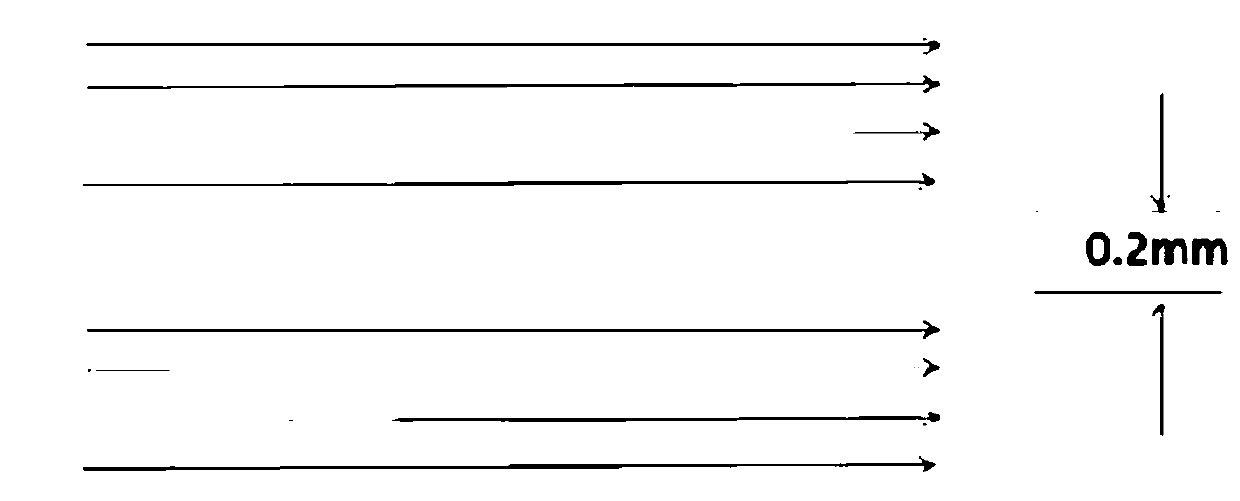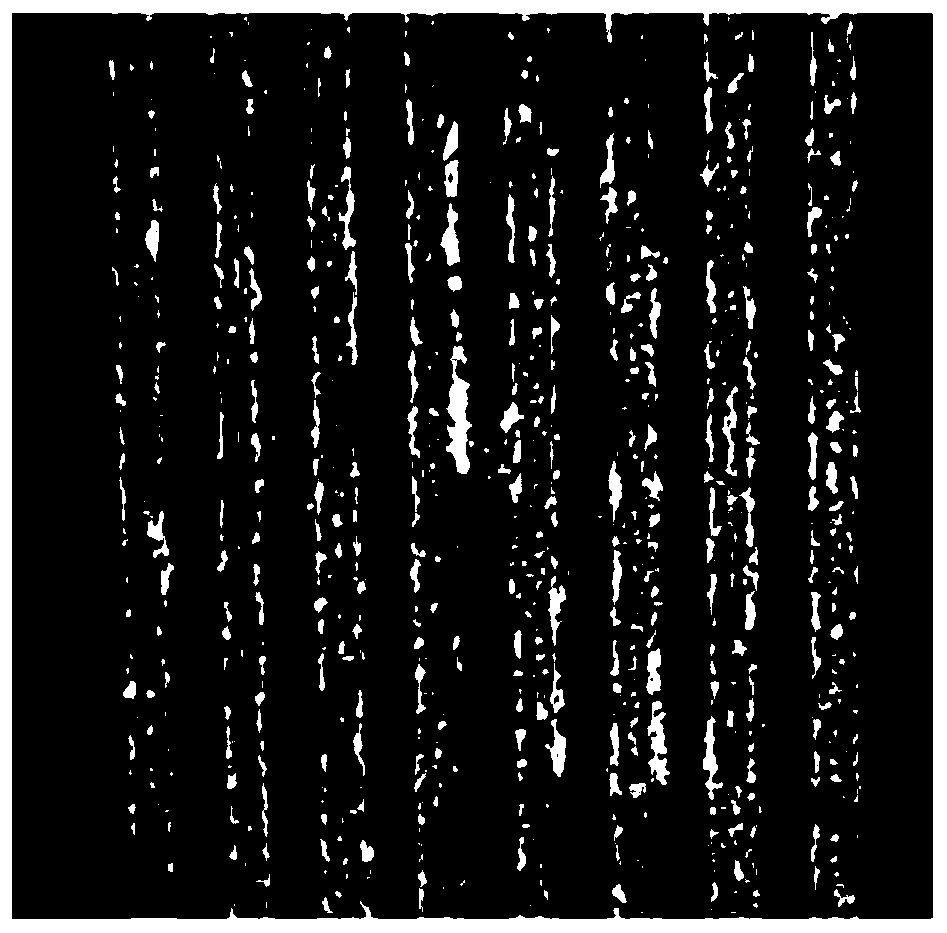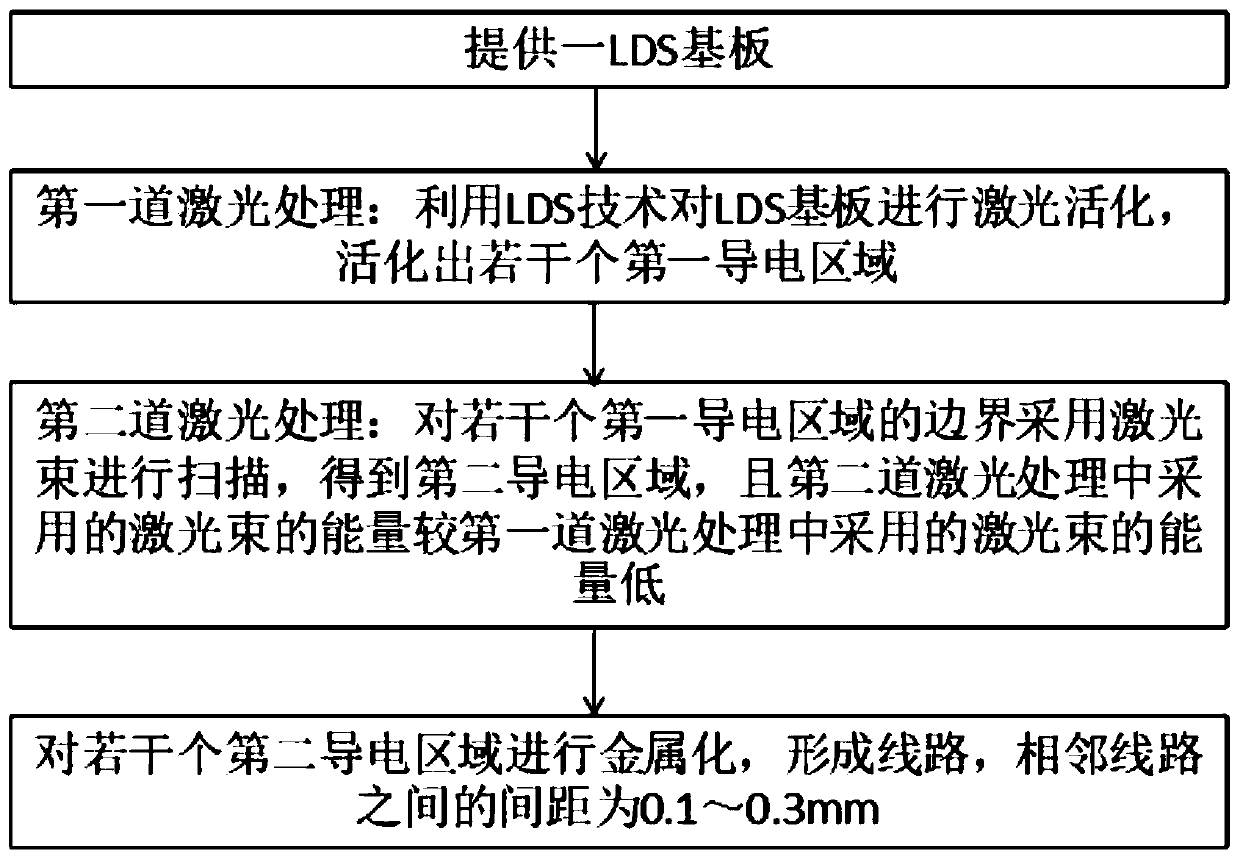Method for improving overflow plating and adhesive force performance of chemical plating layer in LDS process
An adhesion and coating technology, applied in electrical components, printed circuit manufacturing, conductive pattern formation, etc., can solve problems such as failure to pass the 100-grid test, insufficient adhesion of the chemical plating layer, short circuit of adjacent lines, etc., to improve the overflow plating. and adhesion performance, the effect of reducing the risk of overplating
- Summary
- Abstract
- Description
- Claims
- Application Information
AI Technical Summary
Problems solved by technology
Method used
Image
Examples
Embodiment Construction
[0021] A method for improving the overflow plating and adhesion performance of the electroless plating layer in the LDS process proposed by the present invention will be further described in detail below in conjunction with the accompanying drawings and specific examples. Advantages and features of the present invention will be apparent from the following description and claims.
[0022] see image 3 , Figure 4 Shown, the present invention provides a kind of method that improves chemical coating overflow plating and adhesion performance in LDS technology, comprises the steps:
[0023] Provide an LDS substrate, the LDS substrate of the present embodiment selects the LCP material containing glass fiber of Celanese company, the intensity of this kind substrate is better;
[0024] The first laser treatment: use LDS technology to perform laser activation on the LDS substrate to activate several first conductive regions. In the first laser treatment step, see Figure 4 As shown ...
PUM
 Login to View More
Login to View More Abstract
Description
Claims
Application Information
 Login to View More
Login to View More - R&D
- Intellectual Property
- Life Sciences
- Materials
- Tech Scout
- Unparalleled Data Quality
- Higher Quality Content
- 60% Fewer Hallucinations
Browse by: Latest US Patents, China's latest patents, Technical Efficacy Thesaurus, Application Domain, Technology Topic, Popular Technical Reports.
© 2025 PatSnap. All rights reserved.Legal|Privacy policy|Modern Slavery Act Transparency Statement|Sitemap|About US| Contact US: help@patsnap.com



